Celebrating 15 Years in Pollinator Paradise!
go.ncsu.edu/readext?971824
en Español / em Português
El inglés es el idioma de control de esta página. En la medida en que haya algún conflicto entre la traducción al inglés y la traducción, el inglés prevalece.
Al hacer clic en el enlace de traducción se activa un servicio de traducción gratuito para convertir la página al español. Al igual que con cualquier traducción por Internet, la conversión no es sensible al contexto y puede que no traduzca el texto en su significado original. NC State Extension no garantiza la exactitud del texto traducido. Por favor, tenga en cuenta que algunas aplicaciones y/o servicios pueden no funcionar como se espera cuando se traducen.
Português
Inglês é o idioma de controle desta página. Na medida que haja algum conflito entre o texto original em Inglês e a tradução, o Inglês prevalece.
Ao clicar no link de tradução, um serviço gratuito de tradução será ativado para converter a página para o Português. Como em qualquer tradução pela internet, a conversão não é sensivel ao contexto e pode não ocorrer a tradução para o significado orginal. O serviço de Extensão da Carolina do Norte (NC State Extension) não garante a exatidão do texto traduzido. Por favor, observe que algumas funções ou serviços podem não funcionar como esperado após a tradução.
English
English is the controlling language of this page. To the extent there is any conflict between the English text and the translation, English controls.
Clicking on the translation link activates a free translation service to convert the page to Spanish. As with any Internet translation, the conversion is not context-sensitive and may not translate the text to its original meaning. NC State Extension does not guarantee the accuracy of the translated text. Please note that some applications and/or services may not function as expected when translated.
Collapse ▲This year (2023) marks the 15 year anniversary of North Carolina Cooperative Extension’s Pollinator Paradise Demonstration Garden at Chatham Mills in Pittsboro! I created the garden in 2008 with three main goals in mind: 1) to demonstrate how to design, install, and maintain a pollinator garden; 2) to showcase plants native to North Carolina; and 3) to encourage the use of organic gardening practices in pollinator habitat.

One of the many beds in the Pollinator Paradise Garden. Photo by Debbie Roos.

This leafcutter bee was foraging on dwarf wild indigo. She enjoys her nectar reward, gently balancing on the anthers which transfer pollen to the branched hairs on the underside of her abdomen. Photo by Debbie Roos.
I manage the garden with a wonderful group of volunteers and I couldn’t do the garden without them. They tell me they are motivated by their love of gardening and learning and I reward them whenever possible by sharing plants from the garden. Some of my regular volunteers have started their own pollinator gardens from plants they have received from the Pollinator Paradise Garden!

Pollinator garden volunteers (left to right: Virginia Faust, Amanda Magrath, and Sandy Peterson) prepping a bed for planting. Virginia is one of my longest serving volunteers. This sloped bed had contained junipers and ‘Carissa’ hollies which we removed and replaced with culinary herbs that are also excellent pollinator plants. Photo by Debbie Roos.
I didn’t realize when we planted the garden in 2008 that I was going to expand it the very next year and then even more in the following years! But after planting the initial beds I started looking around the property and saw a bunch of parking lot islands that were bereft of plants (except in some cases a single exotic tree maladapted to the heat of the parking lot). When gardeners see empty spaces they can only dream of filling them! So eventually over the years we started planting all of the parking lot islands and now the garden has grown to include over 225 species of plants, 85% which are native to North Carolina.
While writing this article, I had fun looking back at old photos that I took before we planted the garden. Here are just a few examples of some “before” and “after” shots of a few of the beds:

“Before” photo of one of the front beds in 2008. We removed the existing shrubs and erected a cedar trellis on the brick wall. Photo by Debbie Roos.
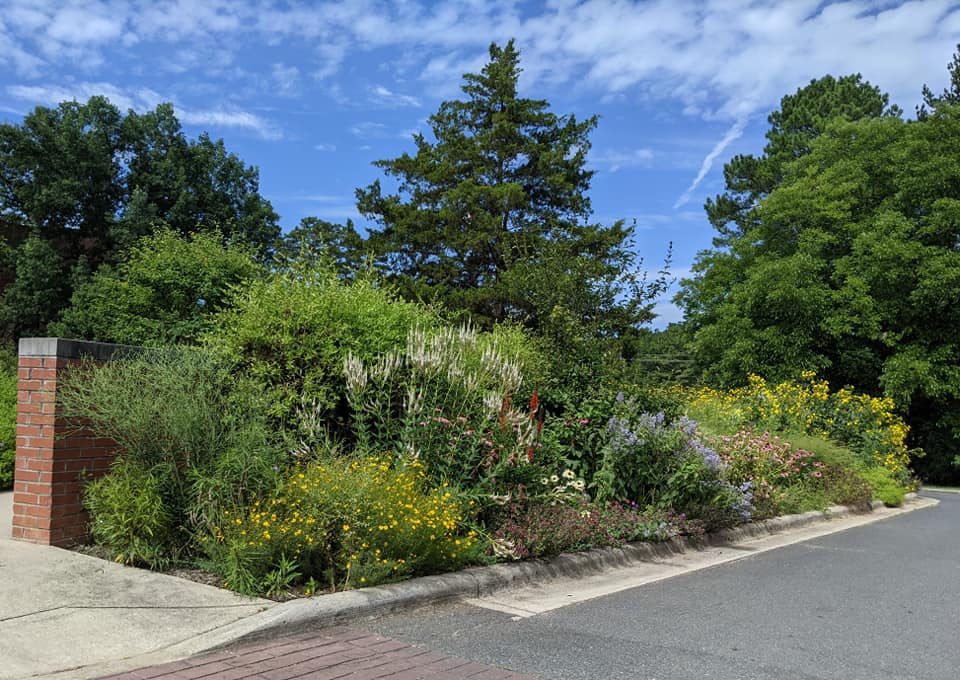
“After” photo of the same bed several years later with climbing aster and coral honeysuckle on the trellis and 25+ species of native perennials. Photo by Debbie Roos.

“Before” photo of one of the parking lot islands in 2008. Photo by Debbie Roos.
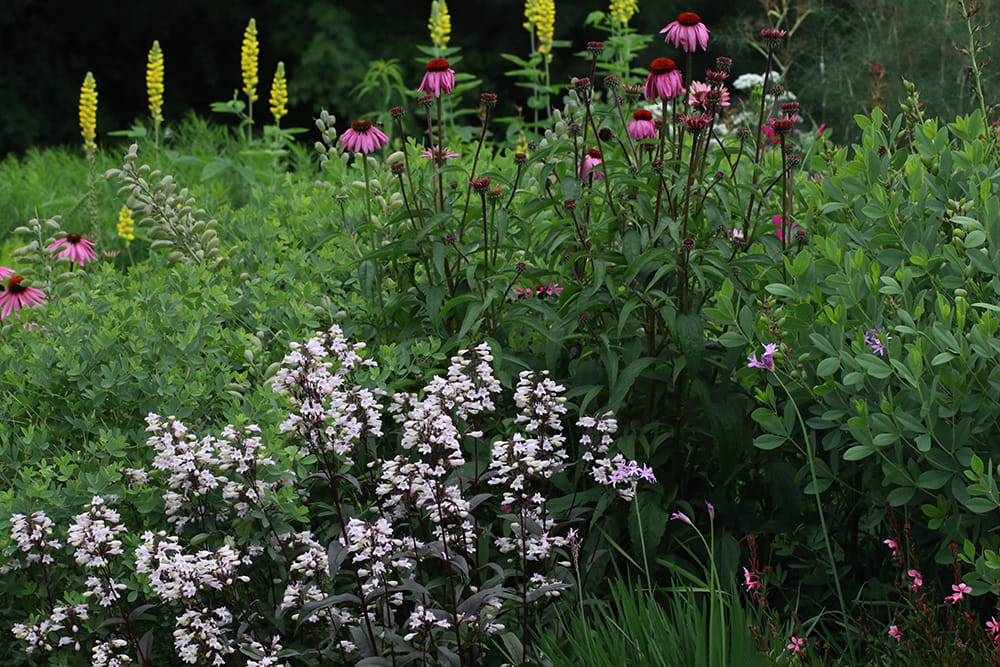
Photo of that same parking lot island taken in spring 2023. Photo by Debbie Roos.

“Before” photo of one of the front beds in 2008. Photo by Debbie Roos.
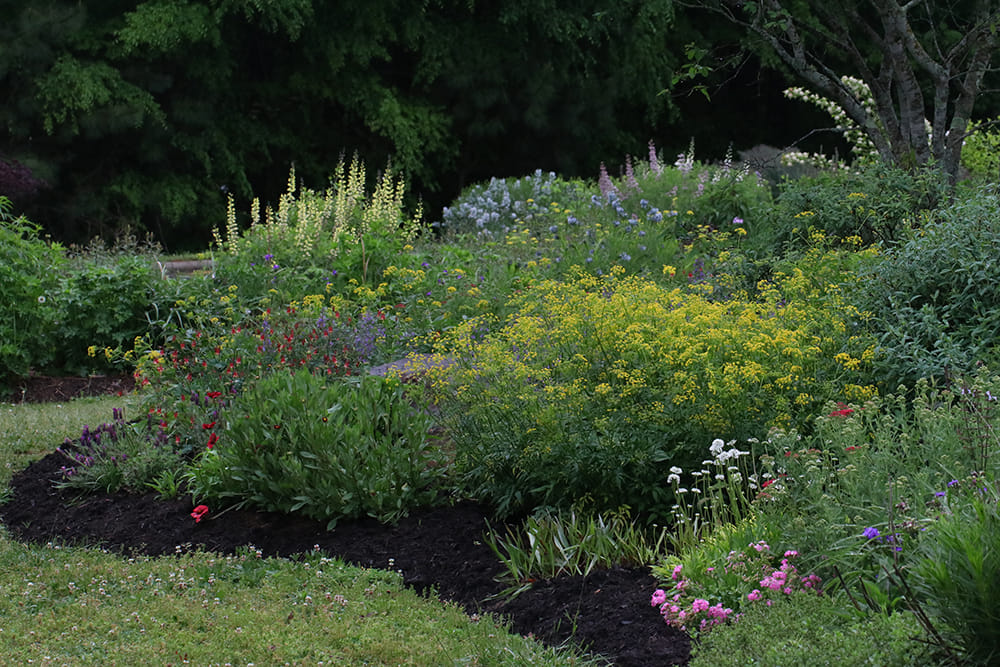
Spring view of that same bed in 2023 (taken from the other side). Photo by Debbie Roos.

Summer view a little farther down that same bed. Photo by Debbie Roos.
I use the garden to teach people both in-person through guided tours and also virtually through my website and social media:
Pollinator Garden Tours
In the past 15 years I’ve conducted 322 free public and private tours for thousands of visitors from all over North Carolina and surrounding states. Private groups have included university students, Extension Master Gardener Volunteers, beekeeping clubs, gardening clubs, plus other groups including the Center for Environmental Farming Systems, JC Raulston Arboretum Summer Camp, NC Wildlife Federation, Chatham Conservation Partnership, Central Carolina Community College, Carolina Farm Stewardship Association, NC Native Plant Society, ForestHer NC, and the City of Raleigh Horticulture Staff. I always enjoy adapting my tours to the age and experience level of my tour groups!
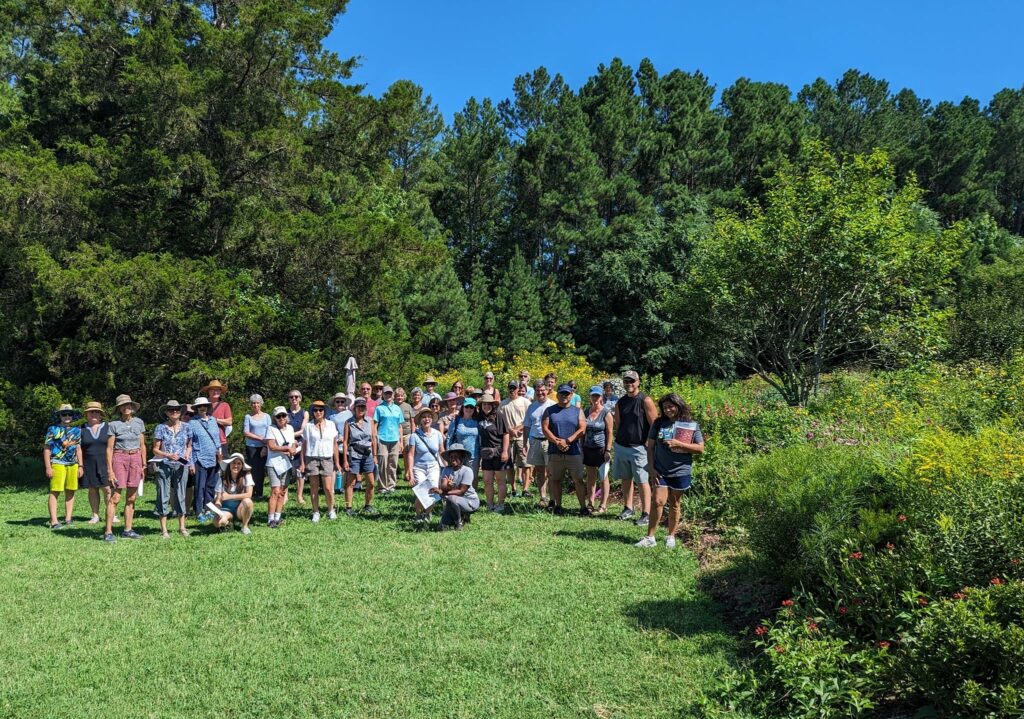
Pollinator garden tour group. Photo by Debbie Roos.
In addition to the guided tours, I also use the garden for other educational programs like the Southeast Pollinator Census with our 4-H Youth, and for a field training for the Southeast Bumble Bee Atlas Project. I am looking forward to doing more programs with kids in the coming years.
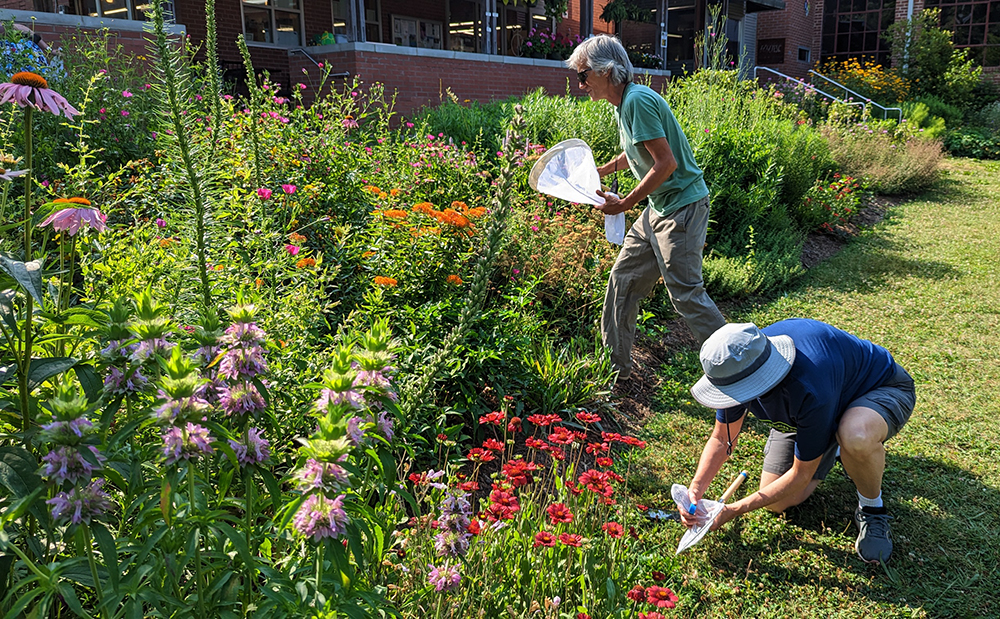
Participants practice netting bumble bees during a field training for the Southeast Bumble Bee Atlas Project at the Pollinator Paradise Garden in 2023. Photo by Debbie Roos.
The value, success, and impact of the Pollinator Paradise Garden as an outreach tool has vastly exceeded my expectations. I certainly never expected to have folks coming to visit the garden from across the state and even out of state. Pittsboro is a pretty small town and I loved when shopkeepers first started telling me that one of my visiting tour groups visited their shop or ate at their restaurant. It became such a regular occurrence that I coined the phrase “pollinator tourism” for when visitors came to town to tour the pollinator garden then spent money in the county. That was an unexpected impact of the demonstration garden!
I conducted a survey recently of 2023 Pollinator Garden Tour participants and 84% of respondents who came for a tour said that they spent money in the county eating out, shopping downtown, and/or buying plants from local nurseries. Pollinator tourism! In that same survey, 100% of respondents said that the knowledge gained from the garden tour helped them create, expand, or improve their pollinator garden.
Pollinator Garden Website and Social Media
If you want to have a successful demonstration garden you have to let folks know about it and regularly market it to inspire people to want to visit! I created a website for the garden that has a lot of resources including downloadable plant lists, photo collections, videos, plant suppliers, and much more. Every two weeks I go around the garden and take photos of what’s blooming and include current snapshots from the garden for the What’s in Bloom section and this provides valuable data going back 13 years. I also post the Garden Tour Schedule on the website so folks can register for a free tour starting in May (registration for 2024 tours will open in April).
As a photographer, I love sharing photos from the garden. Many of them are included on my website but the most complete collection is found on my Facebook page where I have photo albums from the garden. The 2023 Photo Album for example has over 500 photos and counting! I always identify the plants and critters in the photos so it can be a great learning tool for gardeners. The albums are completely public and you don’t need a Facebook account to view them. Throughout most of the year (except in the dead of winter) I am regularly posting photos from the garden to share what is happening. I even have a photo album devoted to the Green Lynx Spiders in the pollinator garden for those of you who share my love for arachnids!
I have curated a collection of my Favorite Snapshots from the Pollinator Garden through the seasons on my website that includes descriptions of all the plants and critters (insects, spiders, reptiles, mammals, birds).
Articles of Interest from the Pollinator Garden:
Fall Chores in the Pollinator Garden: Leave the Leaves and Save the Stems
Provide Nesting Habitat for Native Bees Through Plant Stems in Your Garden
Pollinator Plant Spotlight: Late Figwort
Critter Spotlight: Passionflower Bee
Critter Spotlight: Camouflaged Looper
Here are a few more photos from the Pollinator Garden:
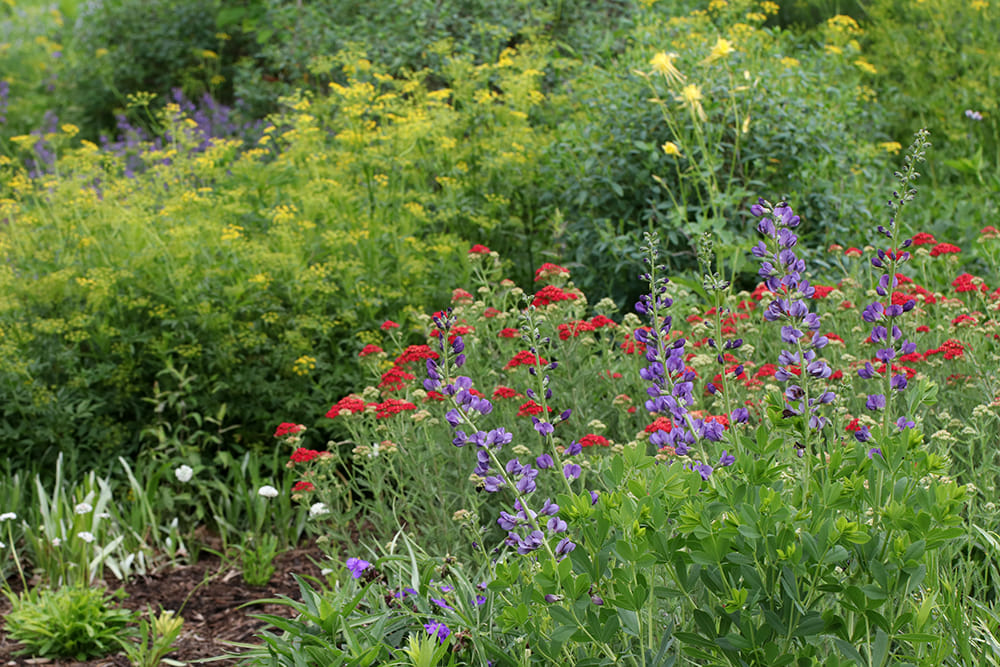
Spring view of the sidewalk bed. Photo by Debbie Roos.
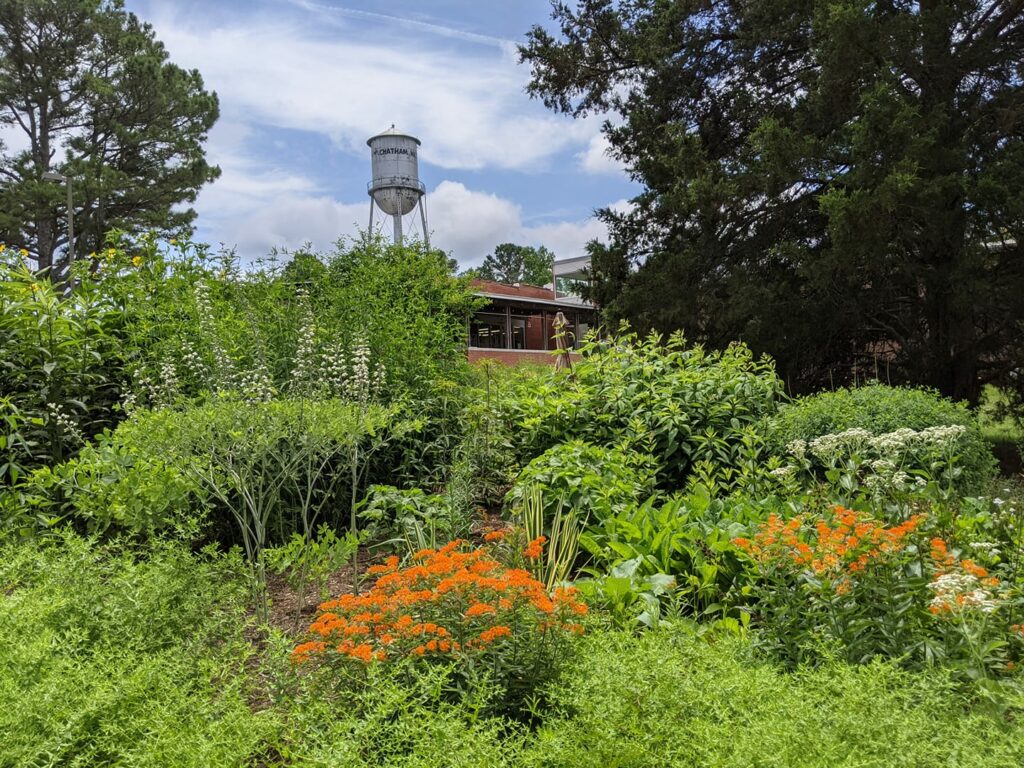
Driveway bed with wild indigo, butterfly weed, wild quinine, and other perennials. Photo by Debbie Roos.

I spy with my little eye…Carolina anole on yarrow. Photo by Debbie Roos.
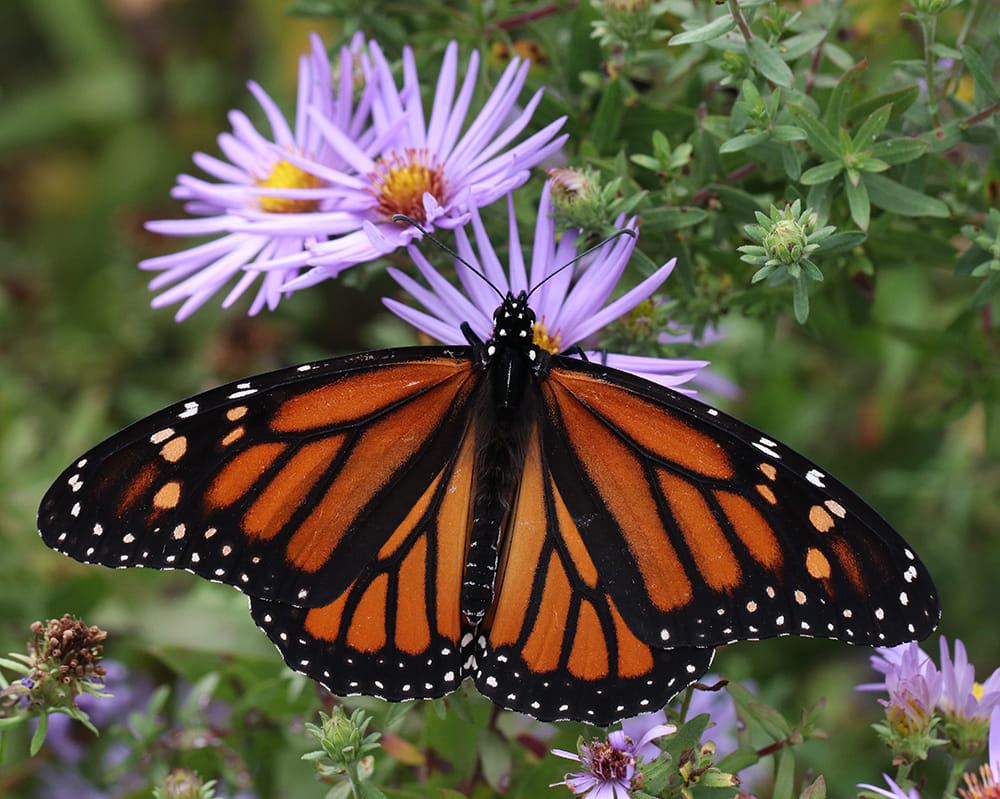
Monarch on aromatic aster. Photo by Debbie Roos.

Spring view of one of the parking lot islands. Photo by Debbie Roos.

Gray hairstreak on dwarf indigo bush. Photo by Debbie Roos.
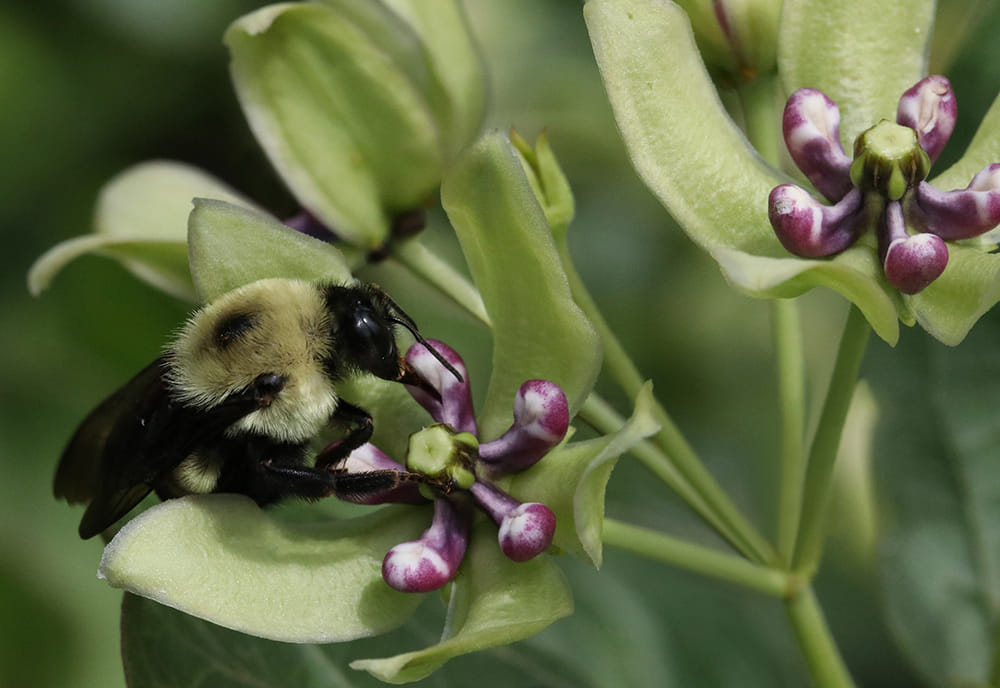
Bumble bee on green milkweed. Photo by Debbie Roos.
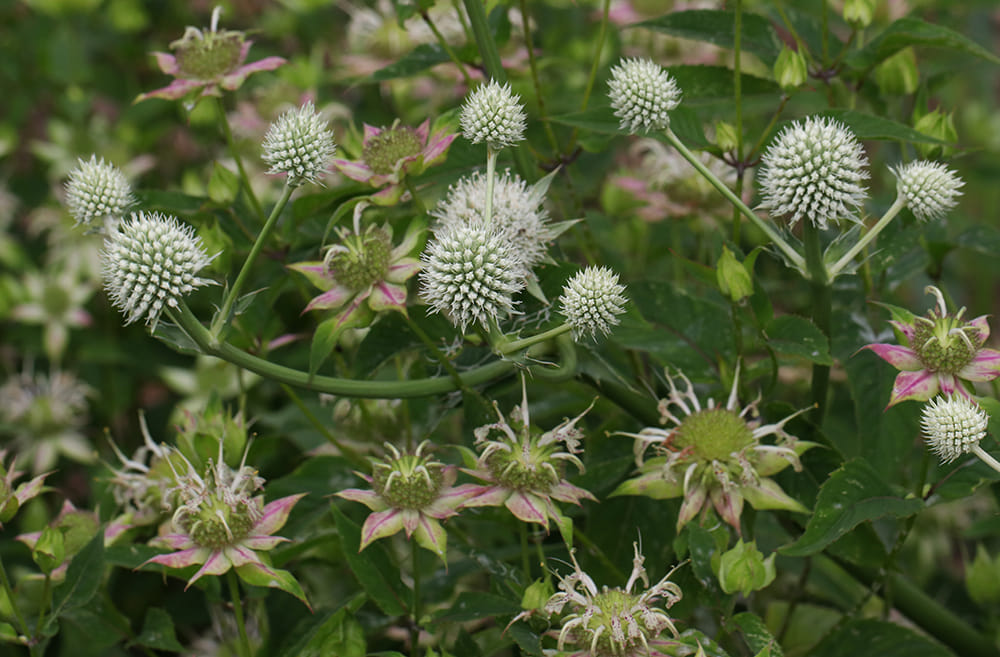
Rattlesnake master and basil bee balm. Photo by Debbie Roos.
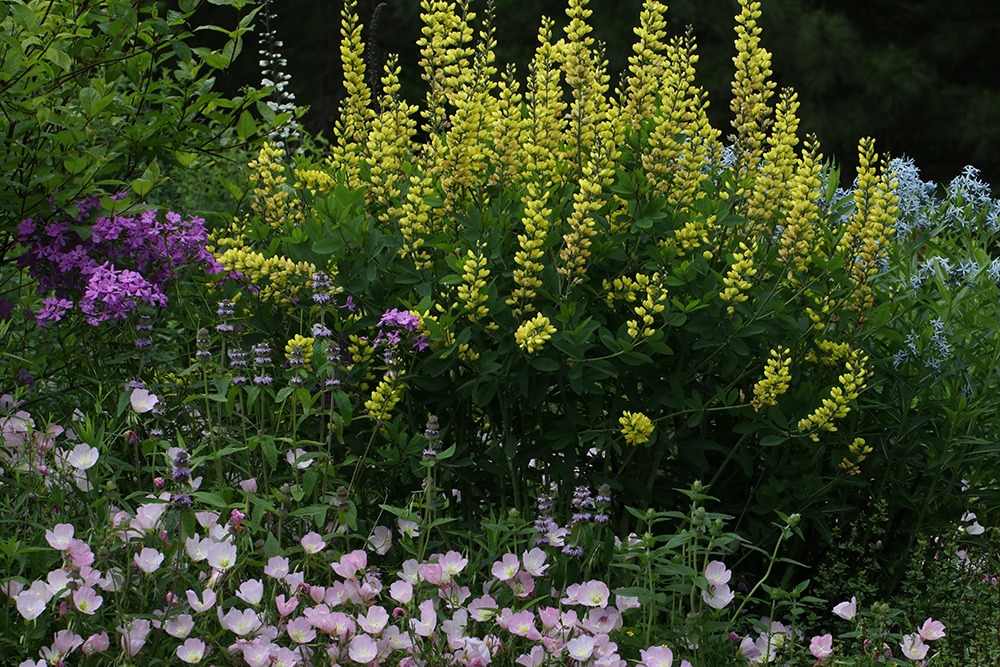
Carolina phlox, downy wood mint, wild indigo, bluestar, and evening primrose. Photo by Debbie Roos.

Cup plant, tall tickseed, wild indigo, blazing star, wild quinine, butterfly weed, and brown-eyed susan. Photo by Debbie Roos.

Hummingbird moth nectaring on native field thistle. Photo by Debbie Roos.

Spring bed with yucca, salvia, ‘Flamethrower’ redbud, rattlesnake master, staghorn sumac, blazing star, and other perennials. Photo by Debbie Roos.
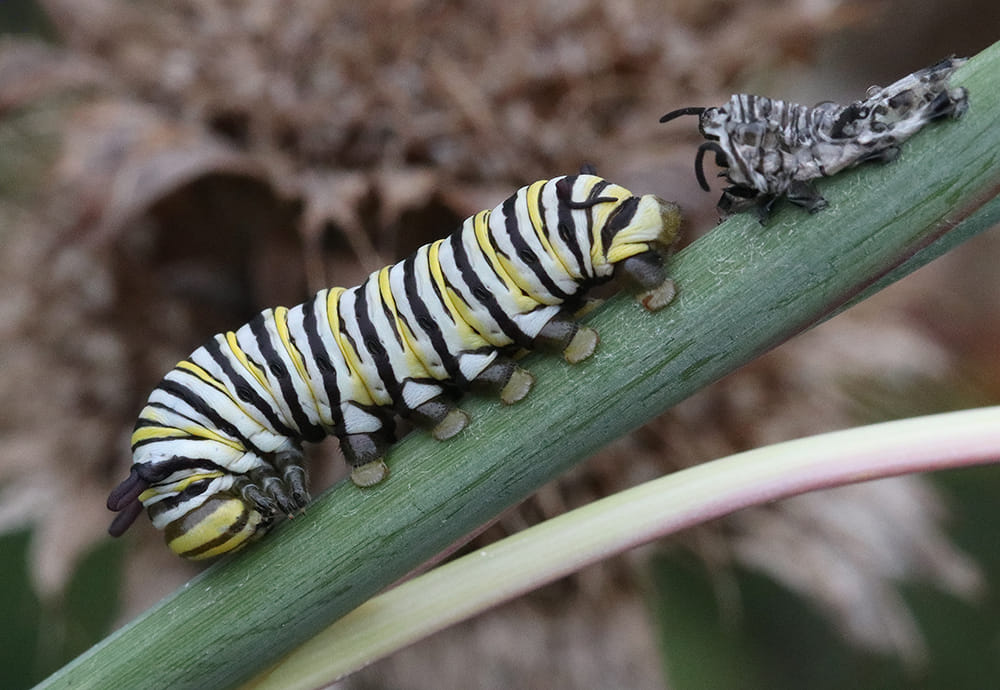
Monarch caterpillars molt five times in the larval stage. This cat has just molted… note the shed exoskeleton behind it. They usually eat the shed skin. This was so recent that the tentacles at the head had not yet unfurled. Photo by Debbie Roos.
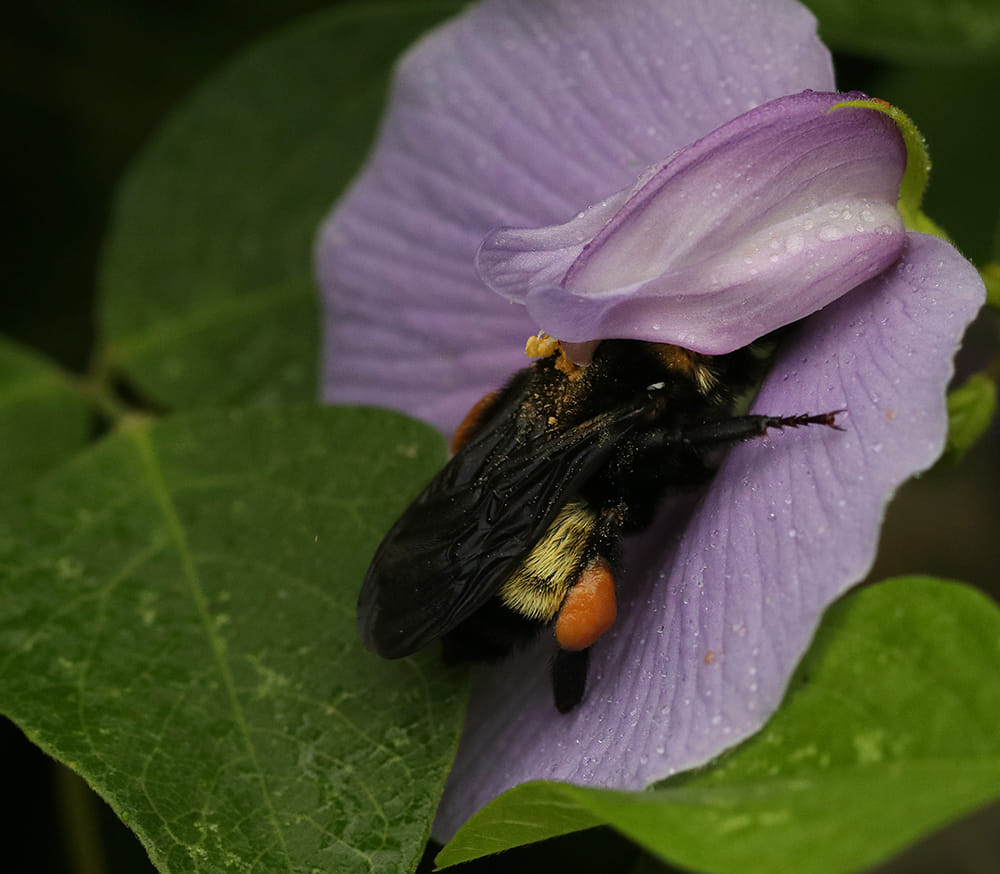
Bumble bee on spurred butterfly pea vine. Photo by Debbie Roos.


